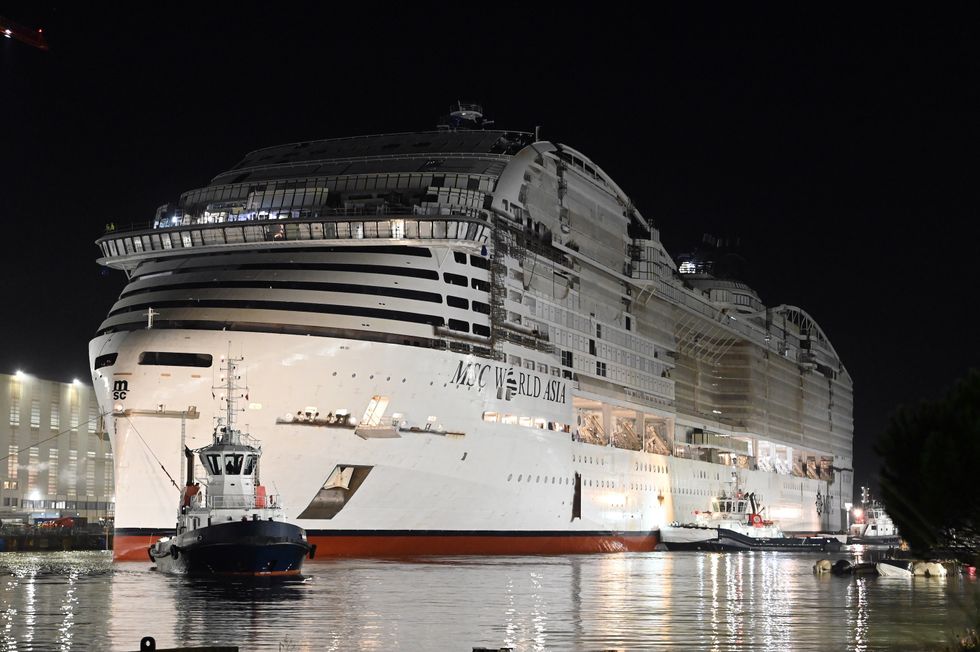OpenAire is a global leader in designing and constructing custom-engineered, all-weather retractable roof enclosures for aquatic venues, transforming traditional indoor water parks into bright, airy, and operationally efficient destinations.
The company, which began its journey 35 years ago, has seen its projects evolve from simple residential pools to massive free-span buildings that are now setting the gold standard for community and commercial aquatic complexes worldwide.
Mark Albertine, the founder of OpenAire, shares with blooloop how the company’s unique aluminium structures deliver significant long-term operational savings and enhance the guest experience.
He also talks about how OpenAire is spearheading a major revolution in the water park sector across North America.
The origins of OpenAire
OpenAire is a privately held company owned by three partners: CEO Albertine, David Bolwerk, VP of sales, and Deborah Baker, CFO.
It originates from the skylight industry, where two of its owners, Albertine and Bolwerk, started their careers.
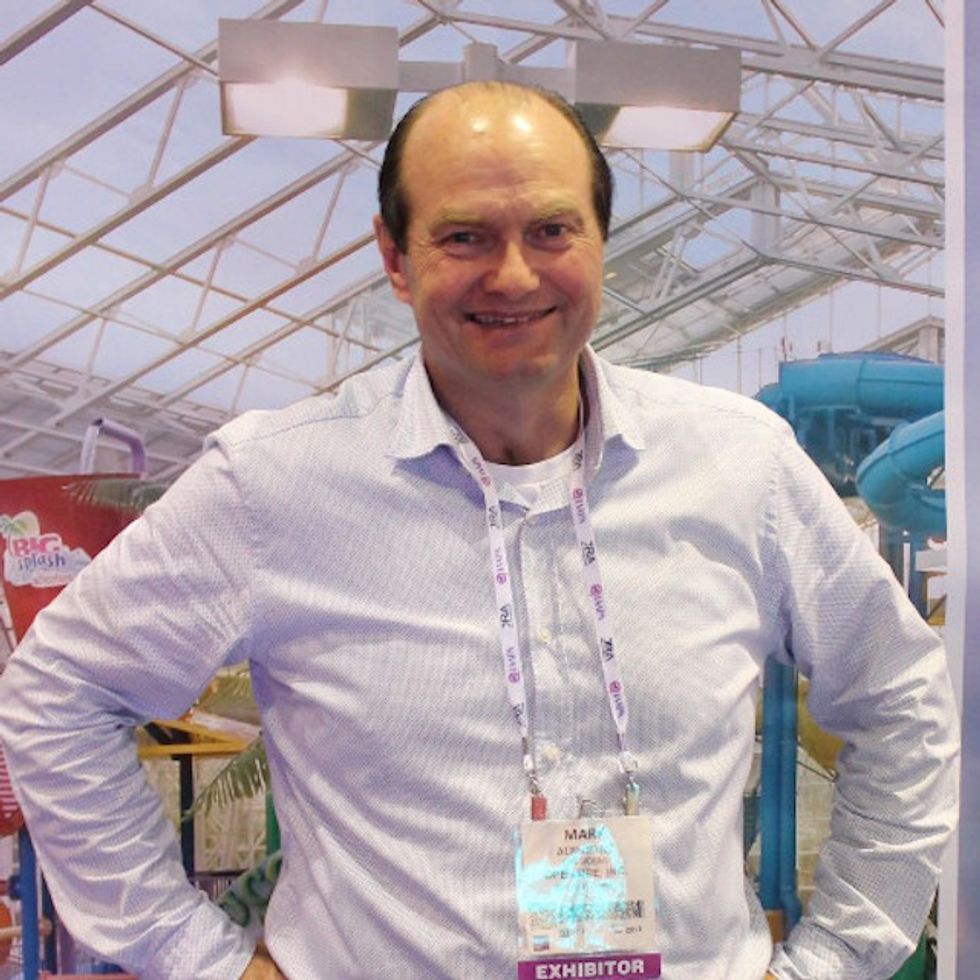
Mark Albertine
As customers sought larger span skylights, the company responded by developing full-aluminium structures capable of spanning (at the time) up to 100 feet (30 metres).
“Initially focusing on just operable skylights for residential pools and small hotels or natatoriums, we observed that as the projects grew to include larger recreation centres, YMCA’s and municipal natatoriums, so too did requests for entire aluminium buildings.
"This was because while our skylights performed well, the surrounding buildings of steel, concrete, and wood often didn’t, leading to issues with mould and corrosion.
“That’s when we began constructing full 100% aluminium buildings, which evolved over time into much larger free-span structures. We can now span approximately 190 feet (around 58 metres) from column to column, making it ideal for indoor water parks.
Today, OpenAire has worked on projects across North America, the UK, and Europe. OpenAire has been "growing consistently ever since” as requests from clients have become larger and more complex.
Projects in progress
Currently, OpenAire has thirteen water parks and eight natatoriums in various stages of design and construction. OpenAire is involved in multiple projects worldwide, as owners and operators take advantage of the significant benefits that this type of solution offers.
Among the new projects currently coming to life are a brand-new expansion to the #1 Best Indoor Water Park, as voted by USA TODAY 10BEST Readers' Choice Awards, at Kalahari Resort in the Wisconsin Dells, a town widely recognised as the birthplace of indoor water parks in the USA.

The new, expanded OpenAire retractable roof building will add 75,000 square feet to the existing water park.
Also coming soon is the new municipal Bellevue Bay indoor water park in Bellevue, Nebraska. This municipal project is the cornerstone of the 575-acre Bellevue Good Life District, an entertainment area. The 140,000-square-foot indoor and outdoor water park and hotel will set the tone for the development of the remainder of the district.
Lastly, the brand-new Bradley, Illinois indoor water park is a 75,000-square-foot standalone water park aiming to be the largest in the state.
Also municipally owned, this project will bring year-round fun and entertainment to this northern US snowy location, cementing it as a tourism hub within the region.
Cost comparison
It would be easy to assume that a sophisticated retractable roof system is prohibitively expensive compared to a standard fixed roof structure. Yet this isn’t the case, says Albertine:
“When you build any aquatic venue properly, our system is comparable in price to a conventional building, and sometimes it is less. Our structures use painted aluminium and 316 stainless steel hardware, with polycarbonate roofs and glass walls.
"Everything is visible and durable; there’s nothing hidden in walls and ceilings like in a conventionally constructed building. This means down the road, there are no unpleasant surprises.”
A properly constructed aquatic facility is expensive, regardless of the circumstances.
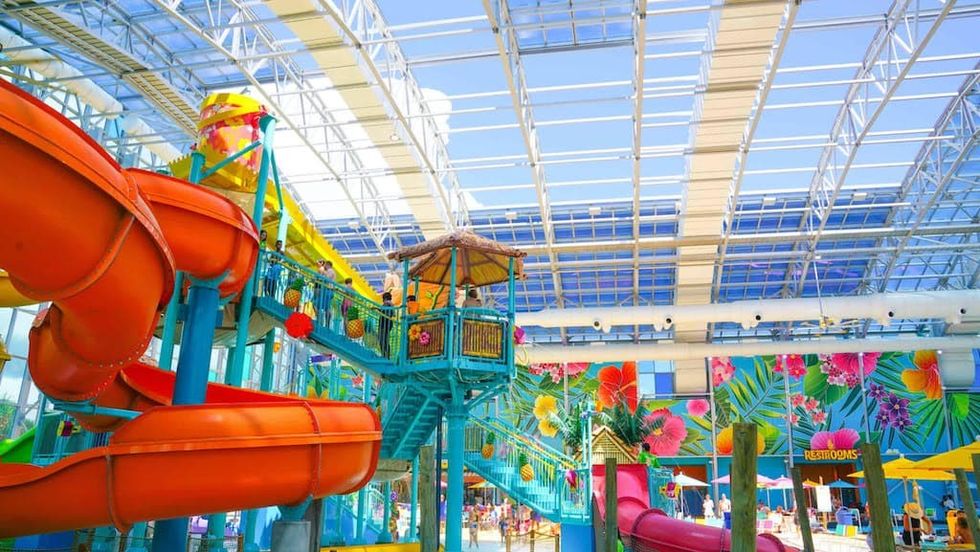
Tropic Falls Indoor Waterpark
“But when you compare apples to apples—meaning the conventional buildings are built correctly without cutting corners—our system isn’t more expensive. We are not an additional project cost.
"We are, however, the reason owners will benefit from significant operational savings down the road. We know this because, due to our extended warranty, we are still around long after the other teams have gone."
Conventional buildings often undergo value engineering, and corners are cut, which, if done without input from experienced aquatic construction experts, can lead to corrosion, mould, and rot.
“We don’t have those issues. Our components are pre-drilled and coated before assembly, so there’s no on-site drilling that breaks the paint and invites corrosion.”
While the retractable mechanism adds some cost (versus a fixed OpenAire roof), it is relatively minor compared to the overall construction budget.
Albertine estimates that the difference for adding the tracks and motors needed to make the roof retractable or not "might be around 5%. While the subsequent energy savings of being able to open the roof can save clients up to 30% a year.”
It is clear that when you can “turn off” your building, you are saving energy and money. The long-term operational savings far outweigh any initial difference in capital costs.
The power of natural ventilation
One of the primary drivers of these savings is the ingenious use of natural airflow, along with energy efficiency and reduced maintenance.
"Opening the roof transforms the building into a natural chimney, using the 'stack effect' for ventilation," Albertine says. This process, which he notes the Romans leveraged centuries ago, is "simple, efficient, and effective."
Maintenance, when needed, is streamlined. The polycarbonate roof panels typically last about 20 years before they might need replacing due to discolouration.
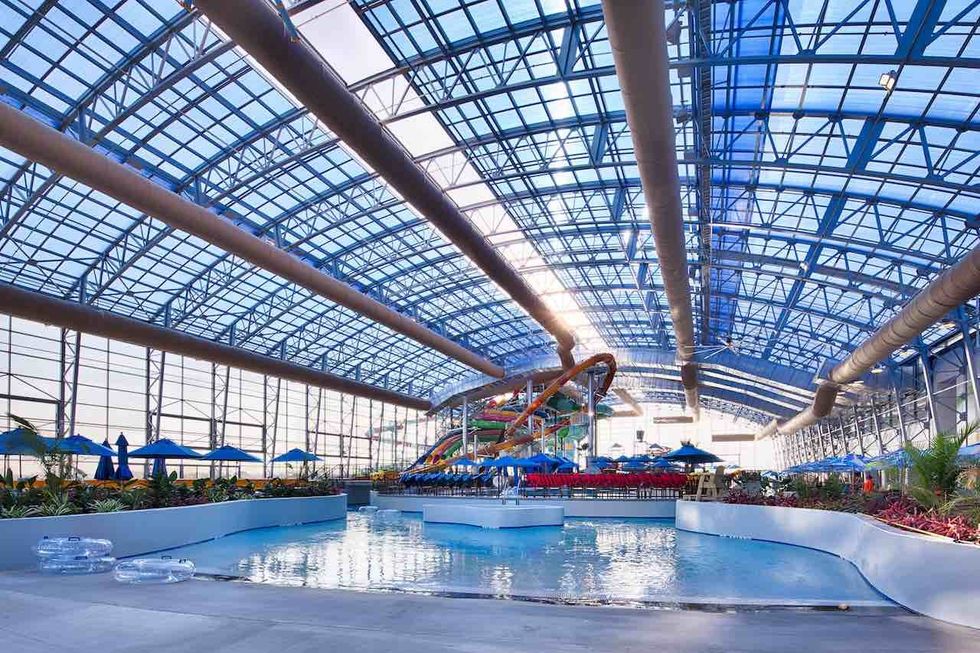
Epic Waters
This replacement process is simple, says Albertine: “Panels pop in and out like windows, often done when the park is already closed."
Conversely, conventional buildings often require long-term facility closures and significant expense when repairs involve tearing out rotted or corroded sections.
Glass walls in OpenAire’s structures are highly durable and generally only need replacement if damaged by external forces, such as impact or hail, which is usually a quick and sometimes insurable fix.
Energy savings are equally substantial. Utilising natural daylight means using fewer lights, and when the roof opens, operators can turn off their dehumidification and air handling systems.
Many of OpenAire’s indoor water parks operate successfully without traditional air conditioning, relying instead on fans and natural airflow through the walls and roofs.
OpenAire in action at Tropic Falls
An example of operational efficiency is Tropic Falls in southern Alabama. The facility has withstood multiple hurricanes without damage. Furthermore, its design provides remarkable cooling benefits.
Albertine says that on hot, muggy days, when the roof and walls are open and the fans are on, the project's general manager has shown that the interior temperature measures "8–10 degrees cooler than outside simply because the air circulates.”
When the roof’s open, it’s essentially an outdoor pool: “But operationally, the energy savings are enormous. You’re not conditioning air 365 days a year like in a conventional indoor park.”
Tropic Falls stands out not only for its efficiency but also for its aesthetic quality:
“It might be one of our prettiest water parks. The theming is beautifully done; every chair, umbrella, table, and ride is on brand. They didn’t cut any corners, and it shows. It’s just a lovely place to walk into.”
A better experience for all
Beyond the bottom line, the most profound benefits of the retractable structure are experienced by the guests and the employees.
Traditional indoor water parks are often characterised by uncomfortable conditions, says Albertine, including "poor air quality—runny eyes, stuffy noses, that heavy chlorine smell.”
He adds: “With our buildings, you avoid that. You can sit under an umbrella, enjoy fresh air and daylight, and relax. It’s a far more pleasant experience for everyone.”
Not everyone visiting a water park is actively participating; the environment must cater to the entire family. "Grandma might just want to sit and watch the kids. The 15-year-old brother might not be that into it, but he has to come anyway.”
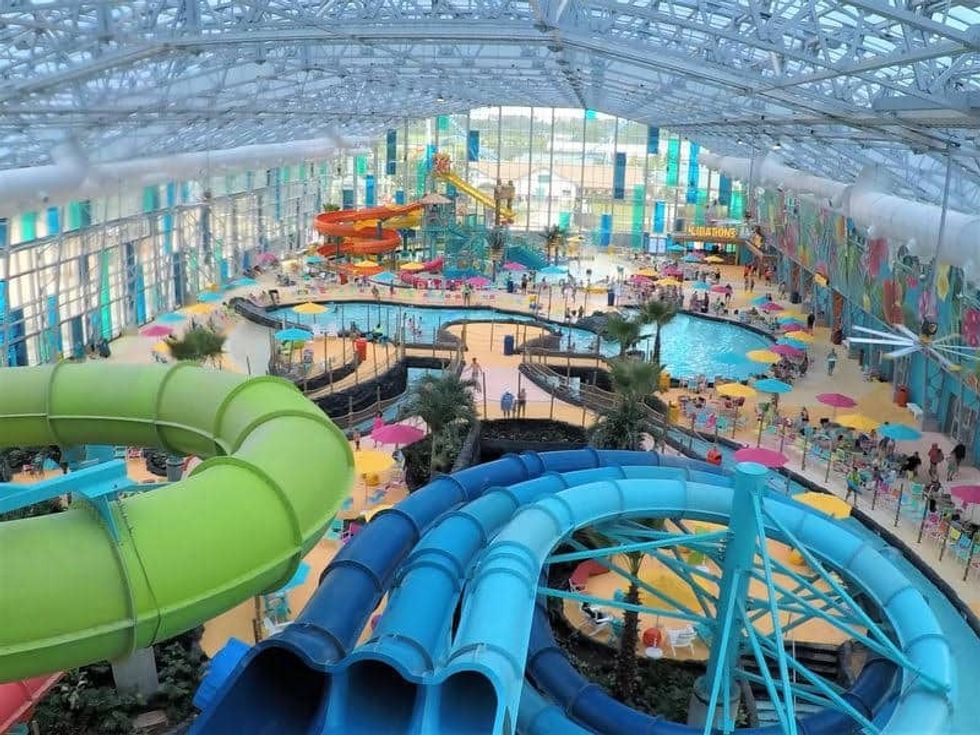
Tropic Falls
By creating a bright, airy, and comfortable environment, the experience is vastly improved for everyone.
The integration of natural daylight is central to this enhanced experience. Albertine points to research demonstrating the positive effects of daylight on people, noting that employees are generally "happier and more productive" in bright spaces.
This preference for natural light is why people seek window seats, stores use large glass storefronts, and malls incorporate skylights and greenery—light-filled spaces encourage people to "spend more time—and more money."
For water park guests, this translates directly to more extended stays. While typical indoor water park visits may only last two to three hours, people tend to linger in a bright, comfortable environment.
More flexible, more marketable
This positive visual environment also benefits the park’s marketing efforts. OpenAire parks gain excellent visibility on social media, says Albertine, “because they simply look better. Nobody wants to post a selfie from a dark warehouse.”
The contrast is so clear that even older, warehouse-style parks are now retrofitting their facilities by adding windows or skylights to mitigate the dim, uninviting atmosphere, especially during the summer.

Jay Peak
Retractable roofs provide climate flexibility regardless of location. In northern climates, these bright, warm spaces become a vital welcome escape during the winter months.
Jay Peak in Vermont exemplifies this flexibility; it starts opening the roof as early as April—sometimes just opening a few panels a few inches for ventilation—and keeps it operational until November.
Guests often do not even notice the gradual opening, but it effectively maintains fresh and comfortable air.
OpenAire helps to modernise older parks
OpenAire is also frequently involved in renovations for older parks seeking modernisation.
A significant case study is Zehnder’s Splash Village in Frankenmuth, Michigan. During gas line work, black mould was discovered throughout the structure.

Zehnder’s Splash Village
“The walls were replaced, and we installed a retractable roof and glass curtain walls. It completely transformed the space from dark and dated to open and inviting. People now want to spend the afternoon there.
“From a guest perspective, that’s the real win. A family spends a lot of money on a water park visit, and if the kids are happy to stay longer—and Grandma’s comfortable too—you’re getting much more value from the experience.”
The benefits extend to staff, a factor that is increasingly critical in an industry grappling with high turnover. Because OpenAire facilities eliminate corrosion and hidden mould, they feel inherently "cleaner, brighter, and fresher".
Albertine says: "If you had to pick a place to work, you’d pick the one that feels good to be in—and that’s what we create."
Early involvement is key
OpenAire categorises its projects into three main types, each presenting unique opportunities and challenges: new builds on empty sites, expansions that may cover existing attractions, and renovations.
New construction on an empty site is "pretty straightforward," says Albertine, particularly if OpenAire is engaged early in the process. A significant advantage the company offers is price consistency.
"We’re one of the few suppliers that actually stick to our quoted price, meaning if price A building is quoted, it remains price A unless the client makes it bigger.”
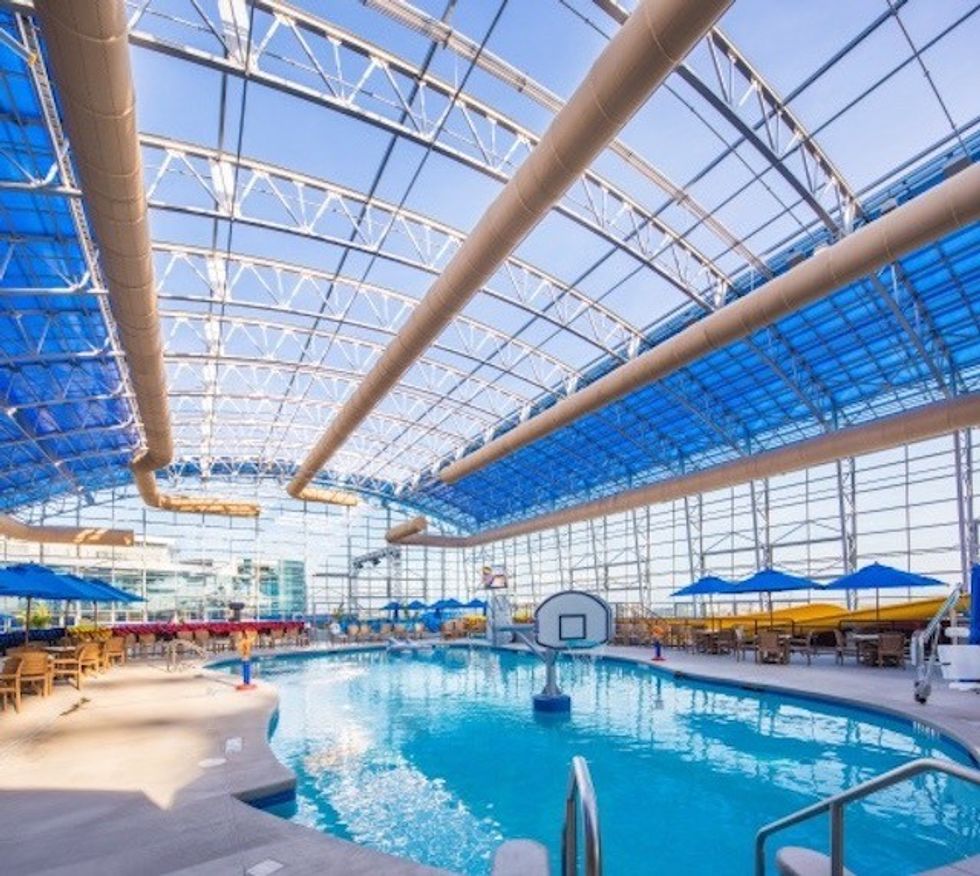
Epic Waters
OpenAire’s pricing includes all necessary components, including doors, retractable roof, and windows or oversized sliding walls, minimising unexpected costs.
Early involvement is key to reducing change orders. Once the project reaches the schematic (SD) or design development (DD) stage, defining size and parameters, OpenAire can provide a "solid budget number that stays consistent."
This early coordination helps general contractors and architects avoid later redesign costs, particularly those related to structural supports and foundation loads.
Transforming water parks & more
The second type of project involves adding a cover to an existing outdoor area or pool. OpenAire can enclose an existing outdoor wave pool, converting it into a year-round facility.
The primary technical hurdles involve navigating existing piping, determining whether foundations can be dug around it, and planning logistics for moving equipment around existing structures and slides.
While complex and site-specific, Albertine stresses, "It’s entirely doable. We can easily remove a building’s gable end wall, extend the structure and put it back on.
"We have extensive experience in expanding buildings for future project phases. It's best if this is considered during the preliminary phases, but either way, we can make it happen.”
One unexpected consequence of enclosing an older (previously outdoor) portion of a park is that "the adjacent areas suddenly look old or weathered," often leading clients to extend renovations to refinishing the pools and patios to make the new space clean and fresh.
The third type of project involves extensive renovations, such as the Zehnder’s project in Frankenmuth. In that case, the existing glulam structure was structurally sound and could be retained, making the installation of the new glass curtain walls and retractable roof feasible.
This project became necessary when a minor interior wall repair exposed significant mould in the walls. Further investigation revealed the need to replace both the walls and the roof.
The transformation was significant, changing the facility from "dark and dated to bright, fresh, and inviting," all while successfully matching the resort's existing theme.
Renovations are easier when the existing structure is in good condition. The more challenging projects involve older, “big box” steel warehouse-style water parks, which are not designed to support skylights or retractable systems.
In such instances, direct roof additions may not be possible, but OpenAire can often add bump-outs or glass extensions to successfully introduce natural light and air.
Regardless of the project type, OpenAire’s early involvement is crucial for budgeting, coordination, and fewer surprises.
General contractors who compare OpenAire’s numbers against their conventional construction often find the overall cost is the same and sometimes less. Still, OpenAire’s advantage is consistency: their price remains stable throughout the project.
OpenAire, Epic Waters and the new municipal model
Looking ahead, Albertine expresses significant excitement regarding the growth of the municipal aquatic sector. OpenAire is currently benefiting from the success of several of its community-focused projects.
Epic Waters in Grand Prairie, Texas, has emerged as "the gold standard for municipally owned water parks in the United States.”
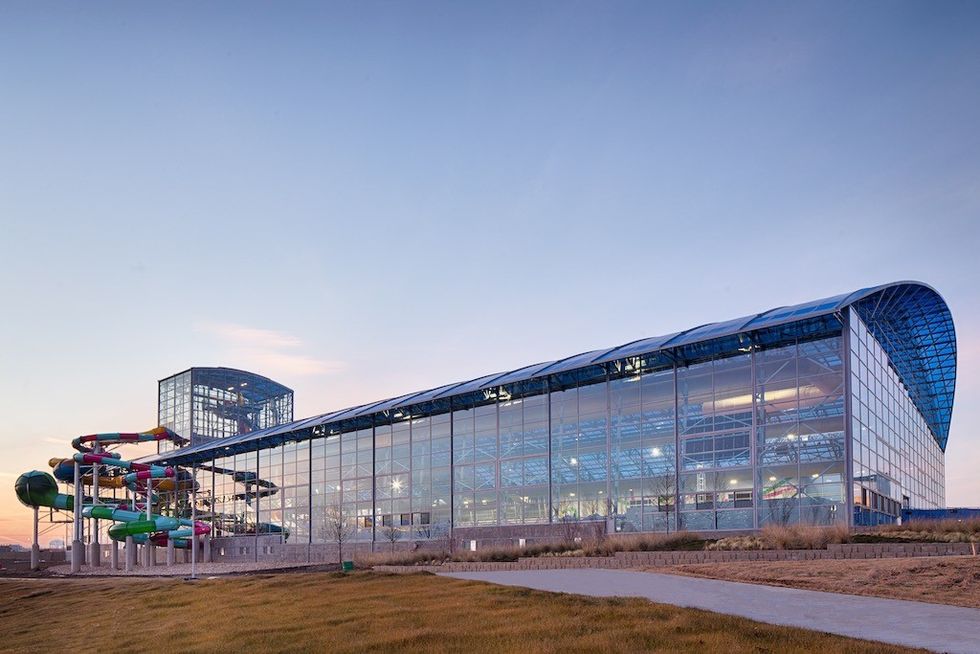
Epic Waters
OpenAire currently has six municipal water parks and eight municipal natatoriums in design and under construction nationwide that follow the Epic model.
This trend excites Albertine because these facilities introduce "something exciting, dynamic, and high-quality to communities where you wouldn’t normally expect to find a water park."
Traditionally, water parks have been concentrated in major tourist destinations, such as Florida, or in large cities. “Now, they are appearing in small towns in Illinois, Nebraska, or Texas.”
This shift has a massive impact, which Albertine says is “bringing something special and accessible to people who might not otherwise have that experience. In an age of rising living and travel costs, offering families a fun, affordable, and local place to go is so important.”
Furthermore, these facilities serve a critical community function: "Swimming is also an essential life skill, and providing a safe, engaging environment where kids can learn through play is incredibly valuable.”
OpenAire is proud of its role in driving growth in this sector across North America. The company’s confidence in its structures is reflected in its strong guarantees, providing five- or ten-year “bumper-to-bumper” warranties.
Adding value to communities
While Albertine would like to see this municipal trend grow in Europe, where community projects tend to be pools with slides rather than full-scale water parks, he emphasises the added value these structures bring to a community.
“We’re creating spaces that become part of people’s lives for generations. Kids grow up going there, get their first summer jobs there, and later bring their own families. It’s affordable, inclusive fun that everyone can enjoy.
"And unlike major theme parks, which are getting more and more expensive, municipal water parks remain relatively affordable, especially for local residents.”
Epic Waters remains the prime example of this success:
“The city of Grand Prairie, Texas, really set out to do something extraordinary. The late Rick Herold, their Parks and Recreation Director, had a bold vision. He wanted to build something truly “epic,” and he did.
"It’s still going strong 10 years later and continues to expand.”
The spirit driving this movement is collaborative rather than competitive. "If one city builds something successful, others can replicate it and adapt it for their own communities," Albertine says.
“For us, this movement toward municipal water parks is both inspiring and deeply meaningful. It’s a continuation of our history in community projects, but on a much larger scale. And it’s something we’re incredibly proud to be part of.”
Charlotte Coates is blooloop's editor. She is from Brighton, UK and previously worked as a librarian. She has a strong interest in arts, culture and information and graduated from the University of Sussex with a degree in English Literature. Charlotte can usually be found either with her head in a book or planning her next travel adventure.


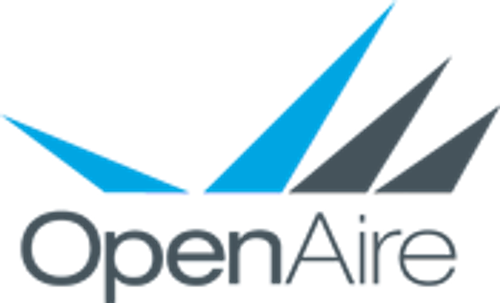
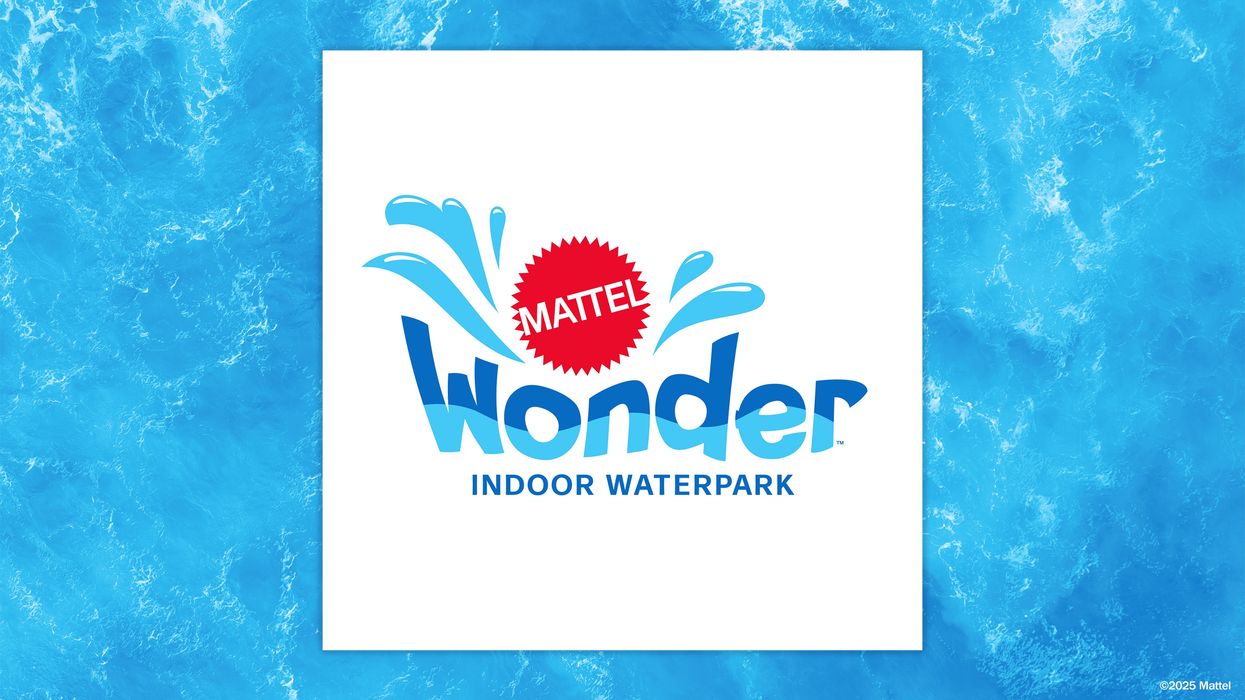
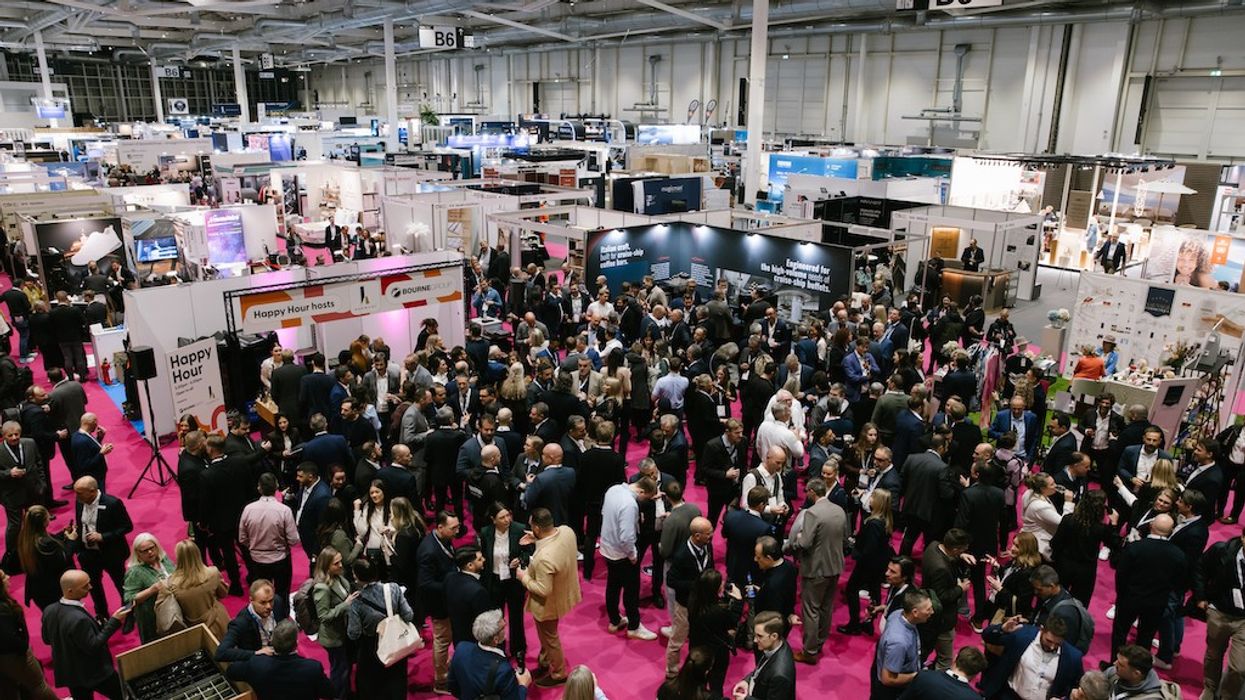


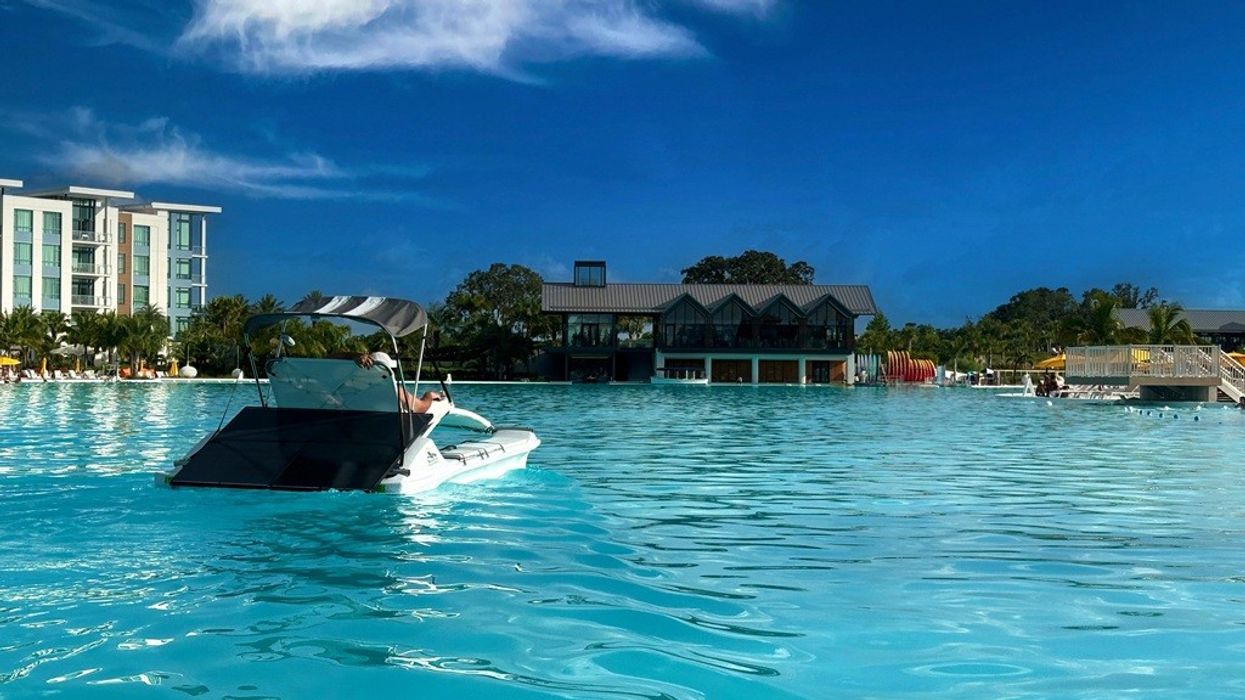

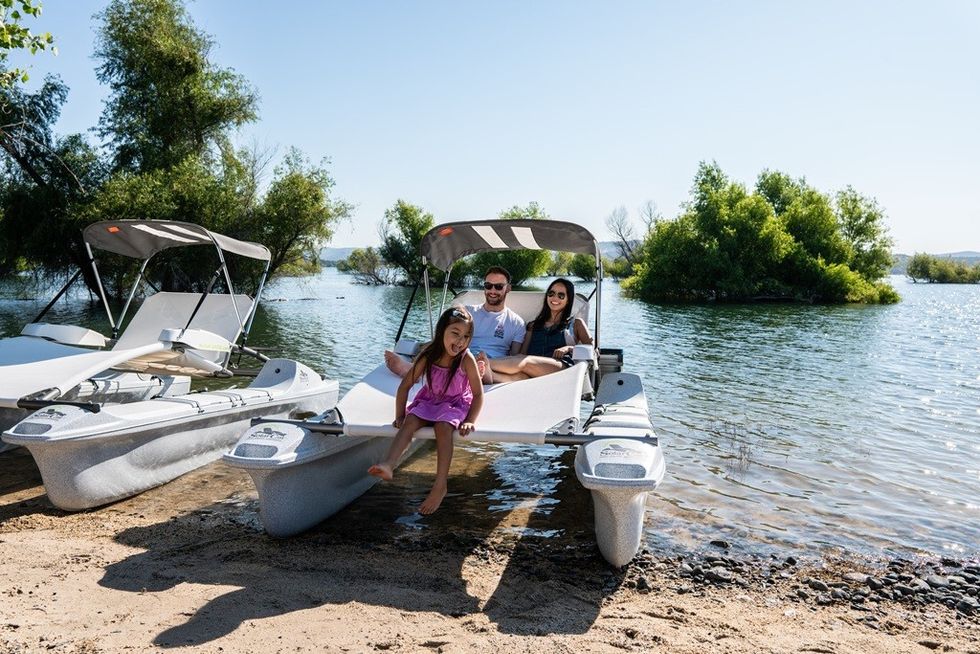

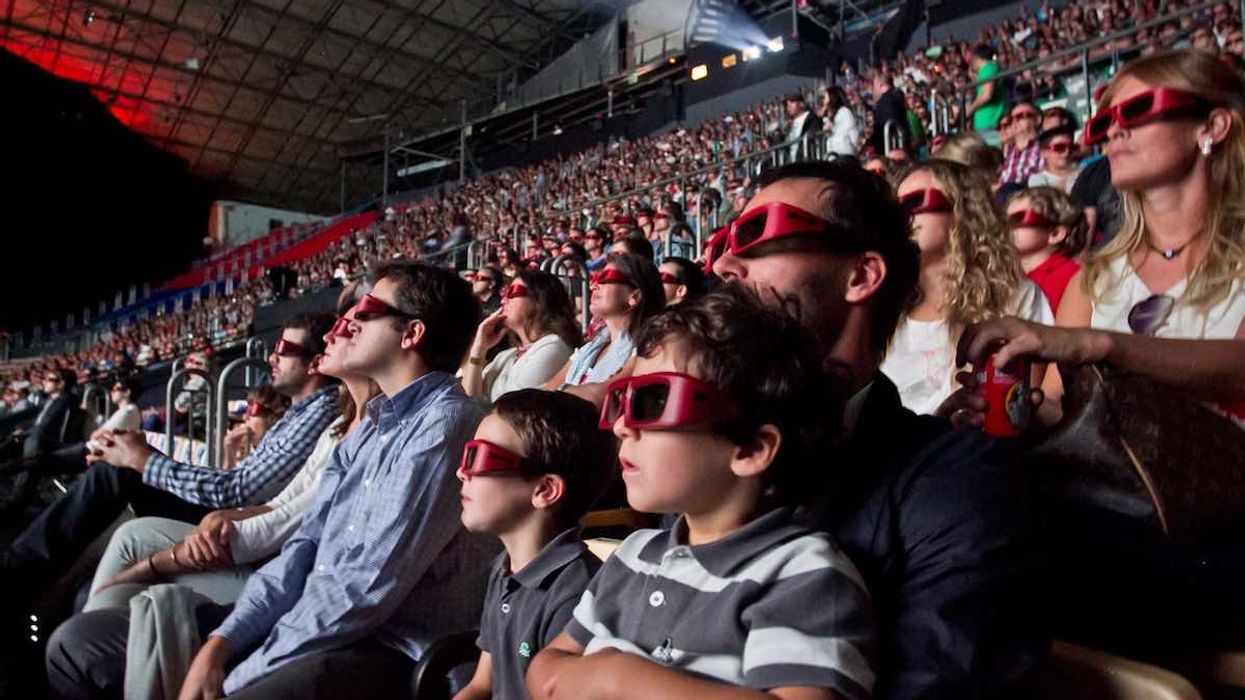

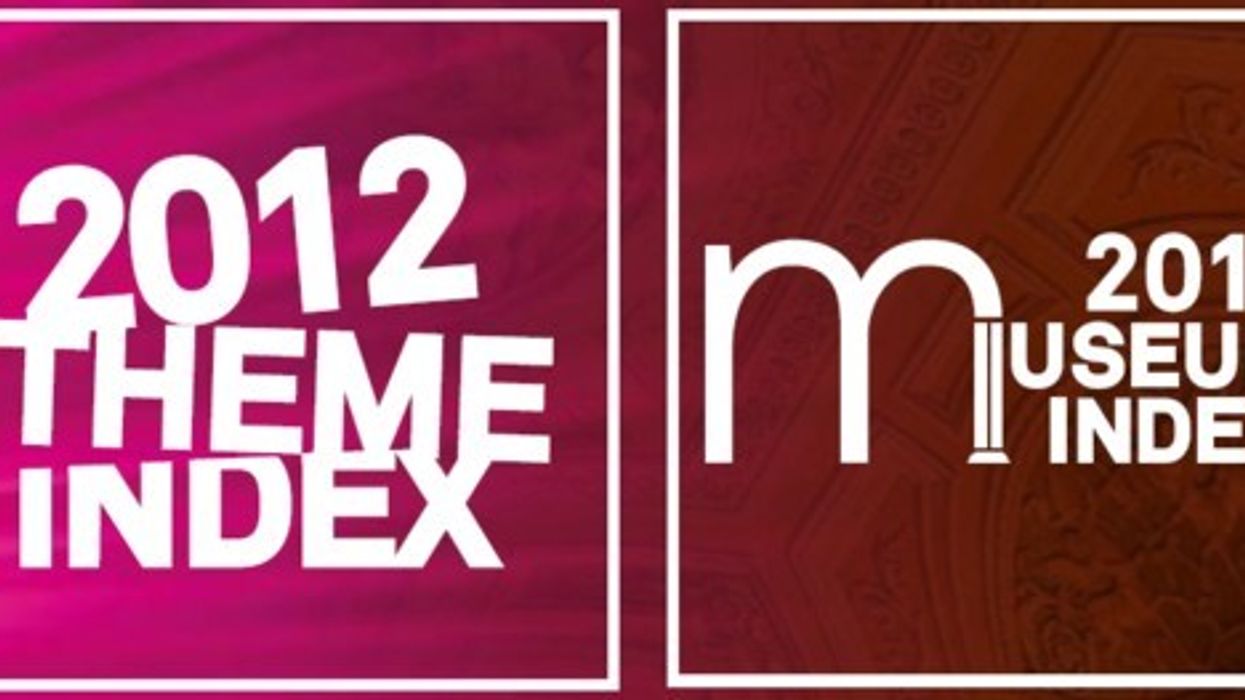

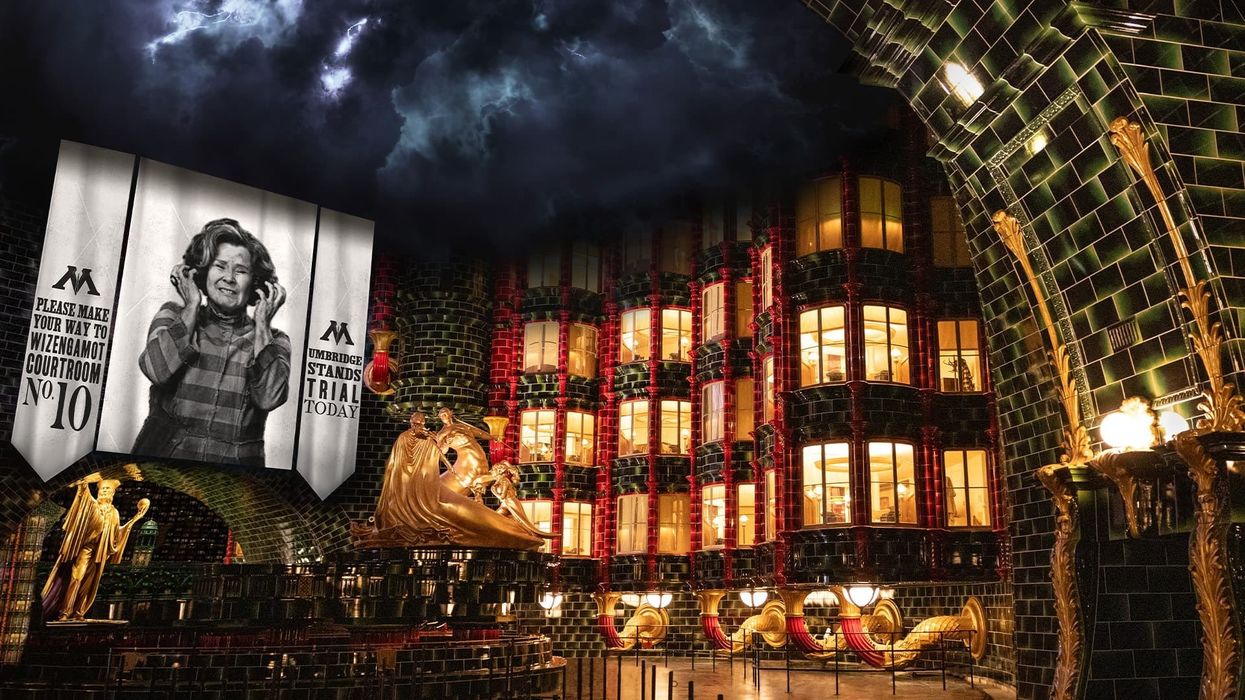



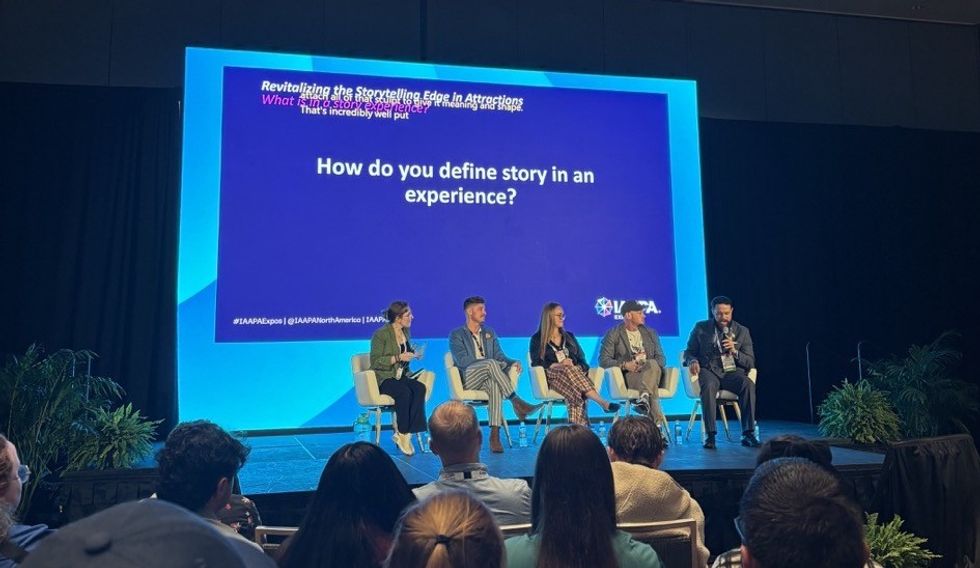
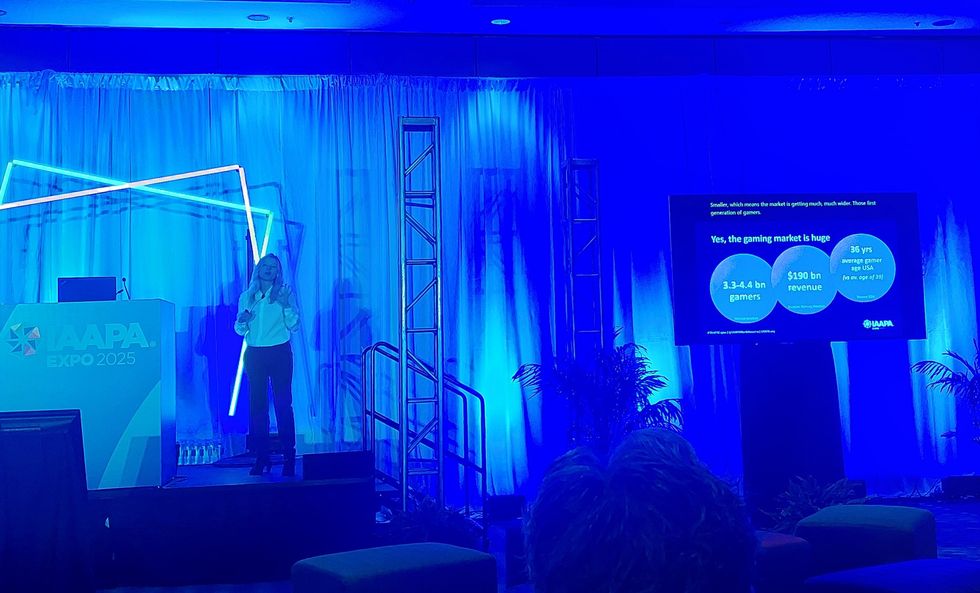
 Detroit Zoo
Detroit Zoo  SUMMIT One Vanderbilt
SUMMIT One Vanderbilt 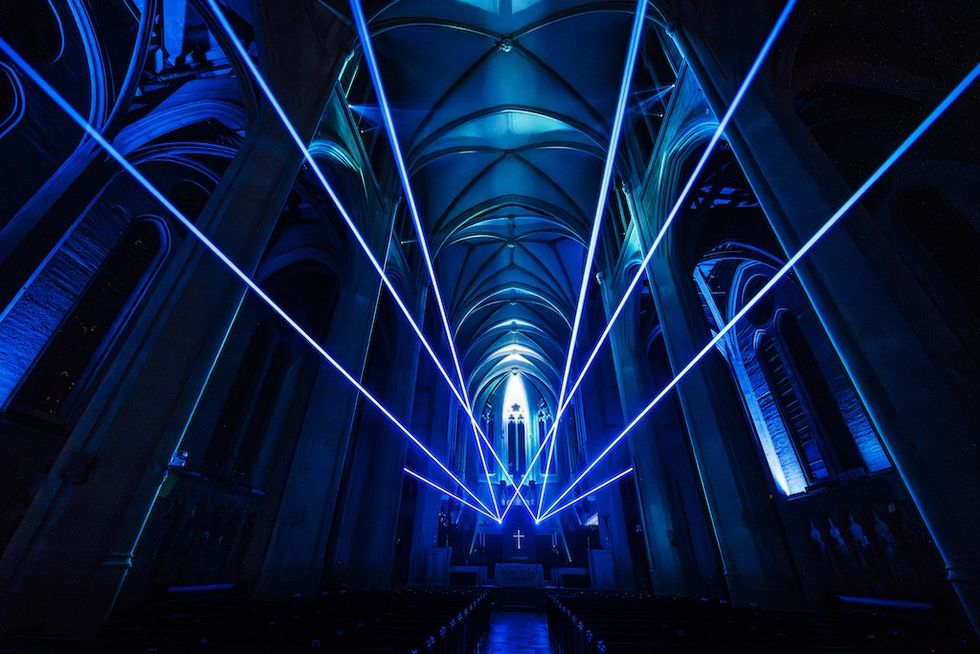 AURA at Grace Cathedral
AURA at Grace Cathedral 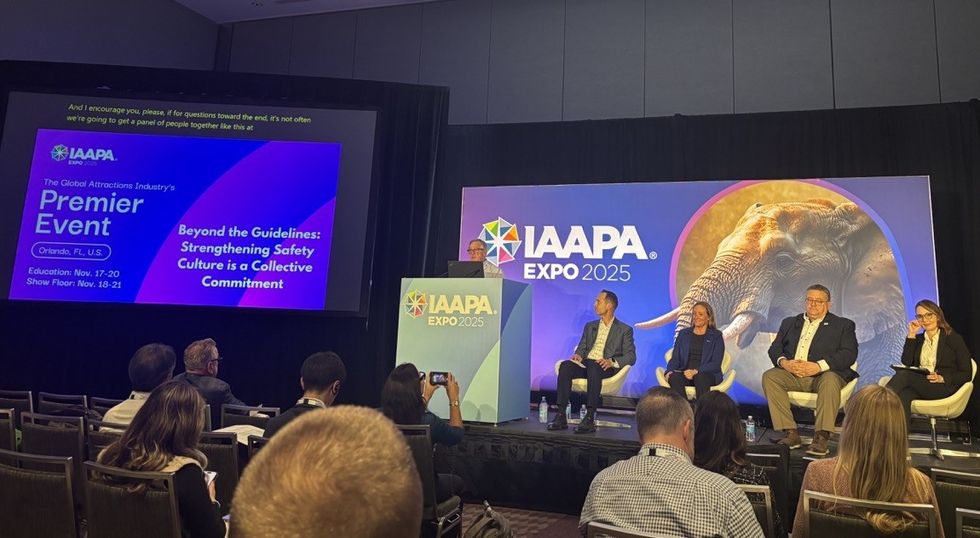
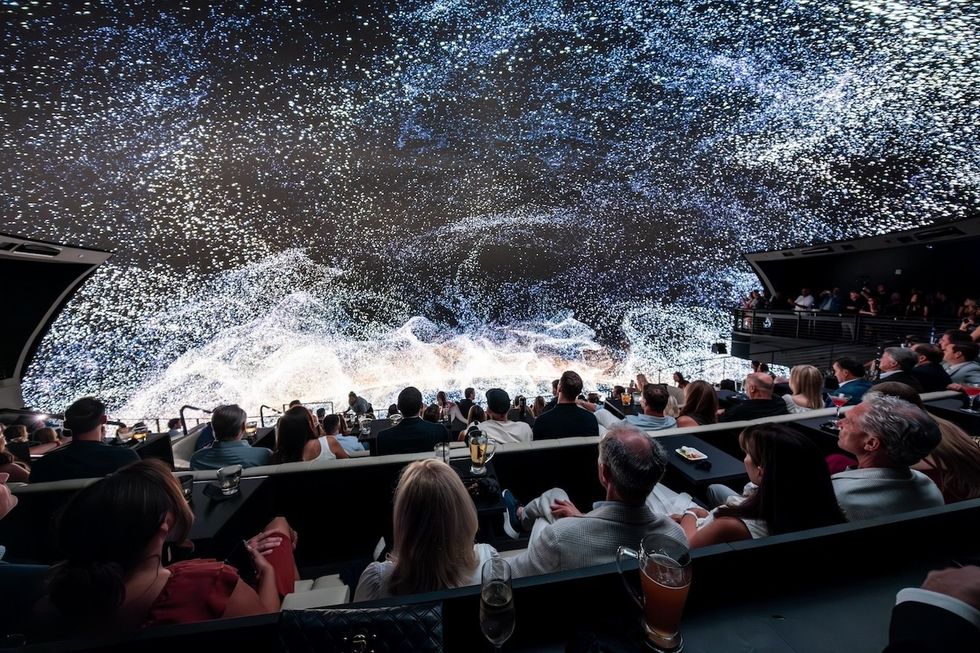 Cosm, LA
Cosm, LA  Order an Object appointment at V&A East Storehouse. Image by Bet Bettencourt for V&A, Object pictured - A pair of qabqab, made 1800-1880, Egypt
Order an Object appointment at V&A East Storehouse. Image by Bet Bettencourt for V&A, Object pictured - A pair of qabqab, made 1800-1880, Egypt 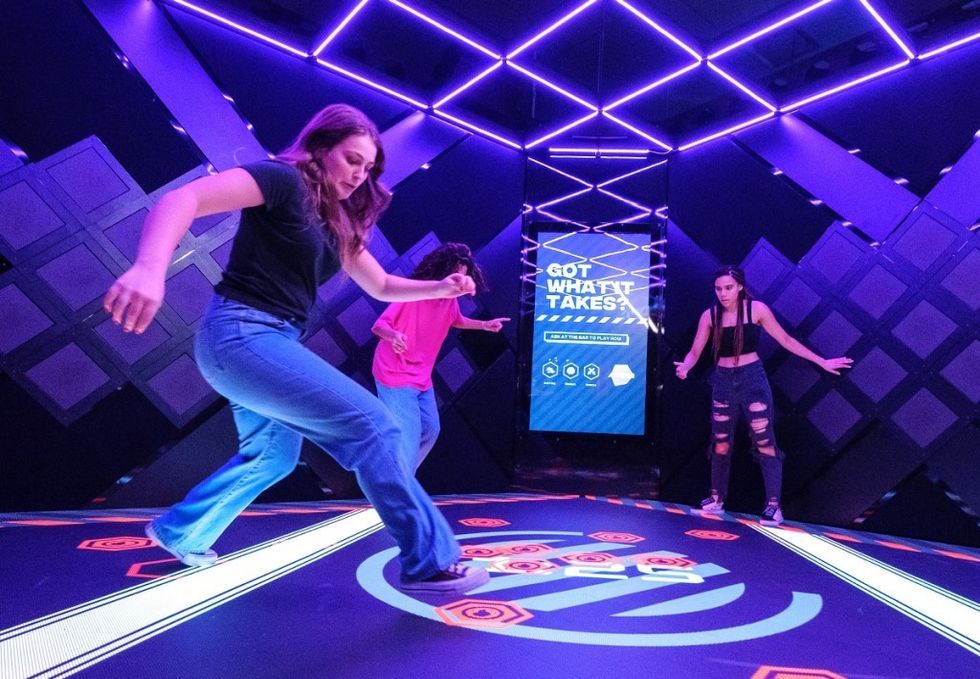 CONDUCTR - The Arena from Game Volt
CONDUCTR - The Arena from Game Volt 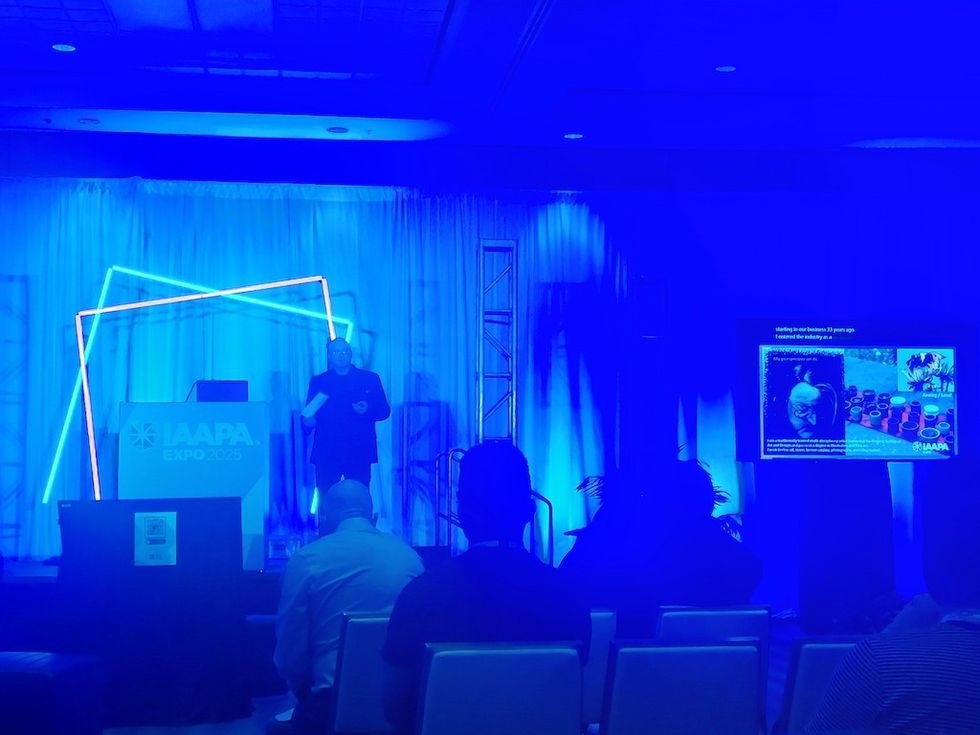
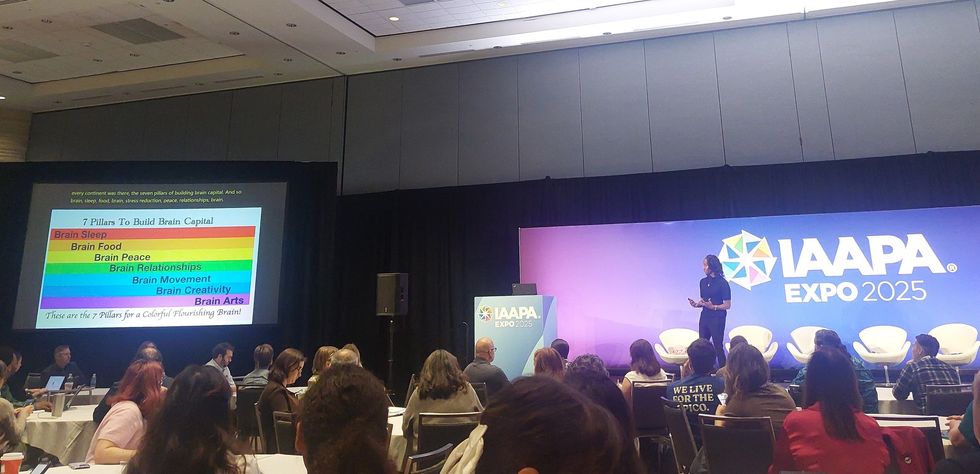
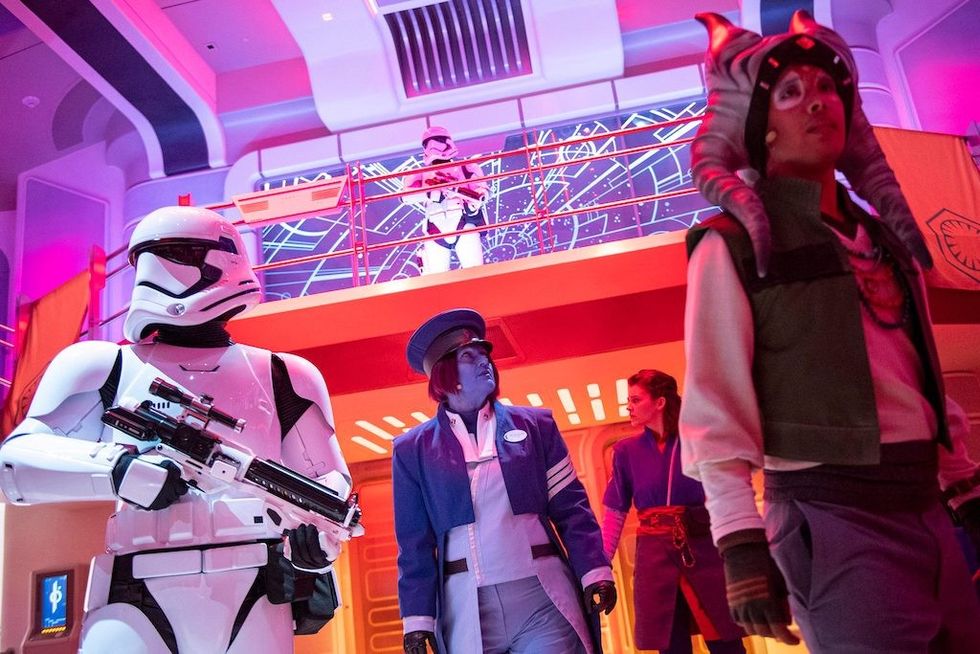 Star Wars: Galactic Starcruiser
Star Wars: Galactic Starcruiser  Minecraft interactive experience
Minecraft interactive experience 


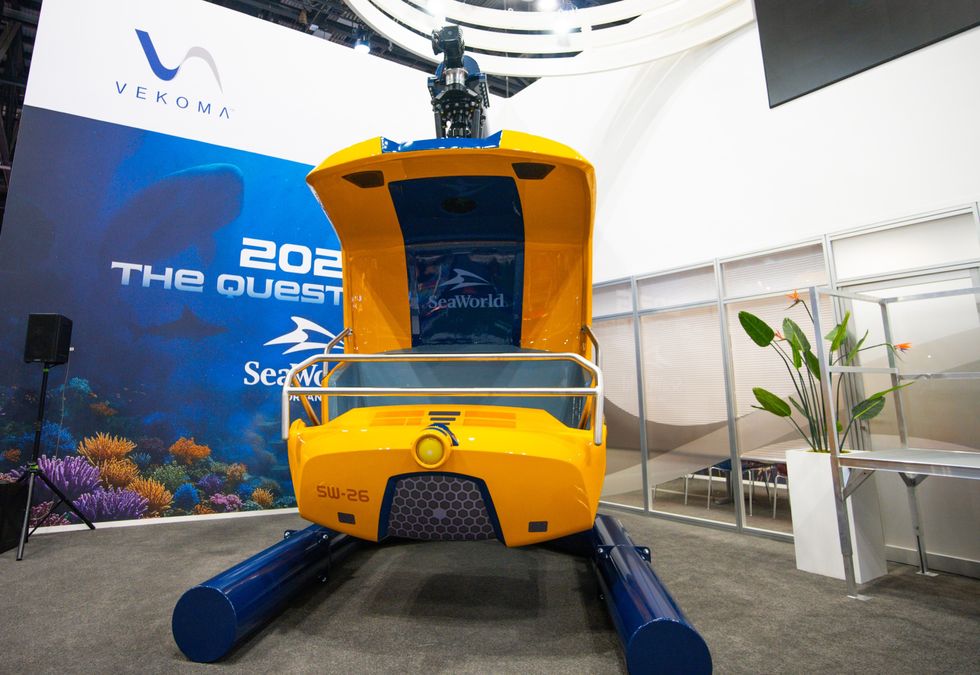




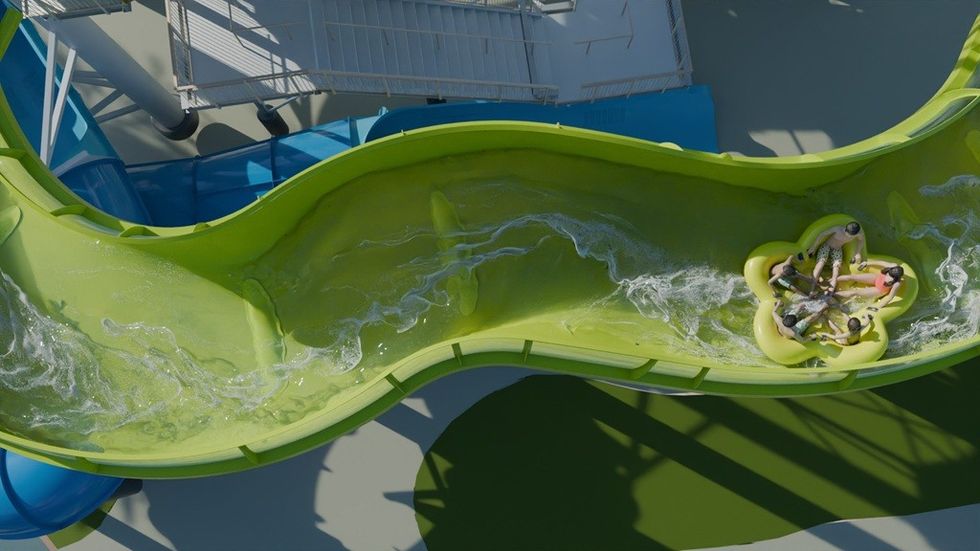
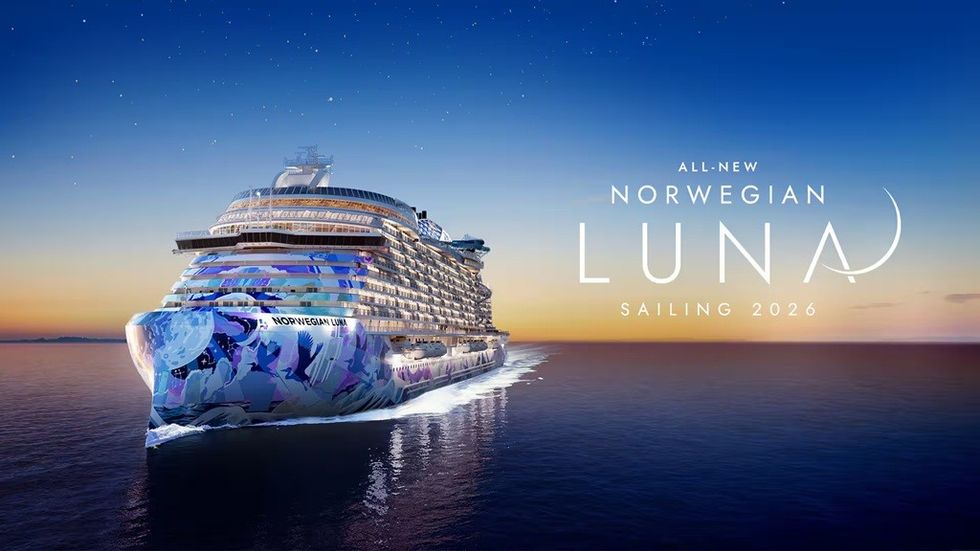



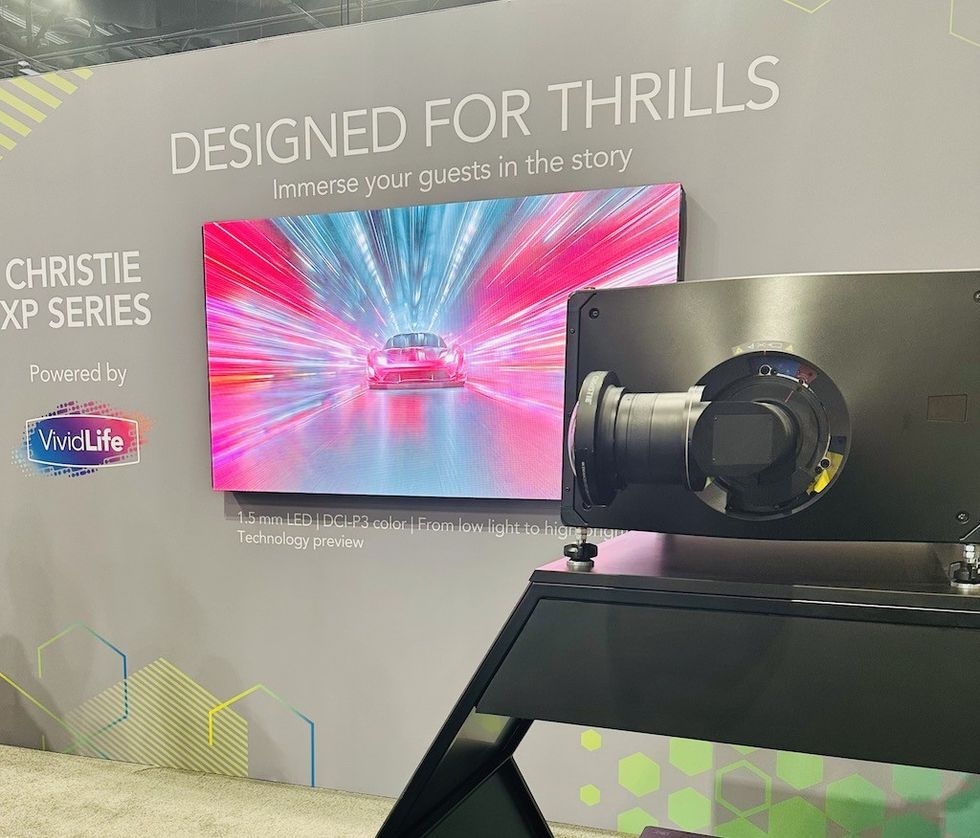

 See you next year!
See you next year!
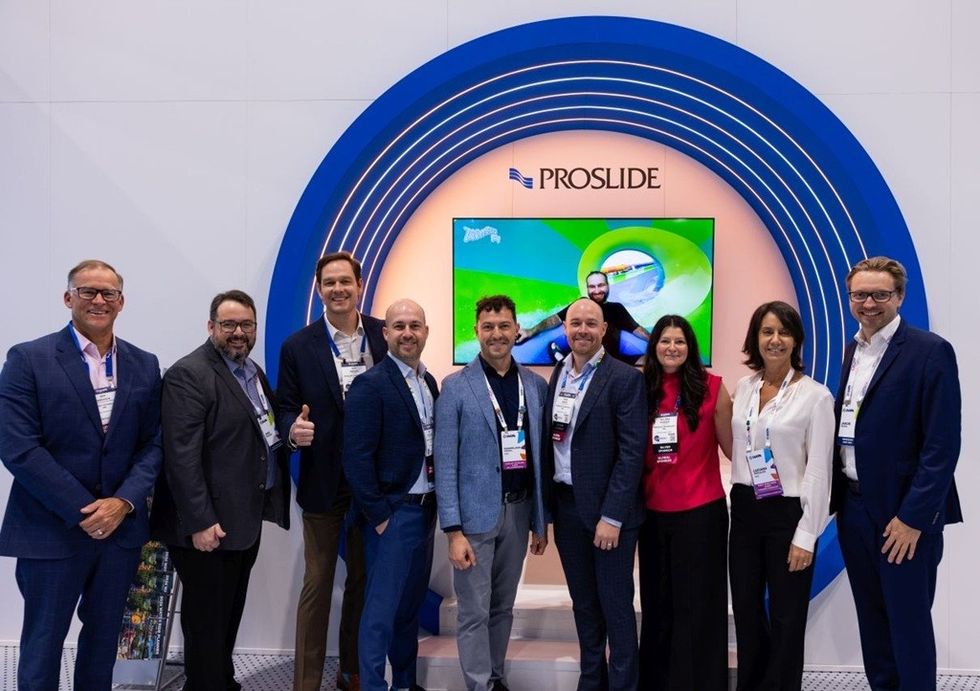
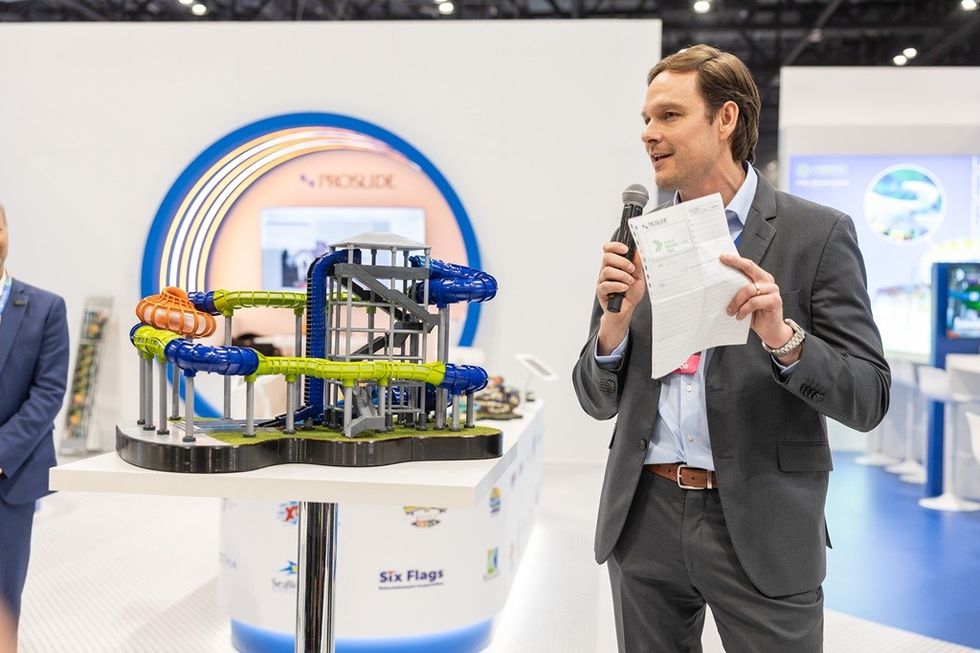

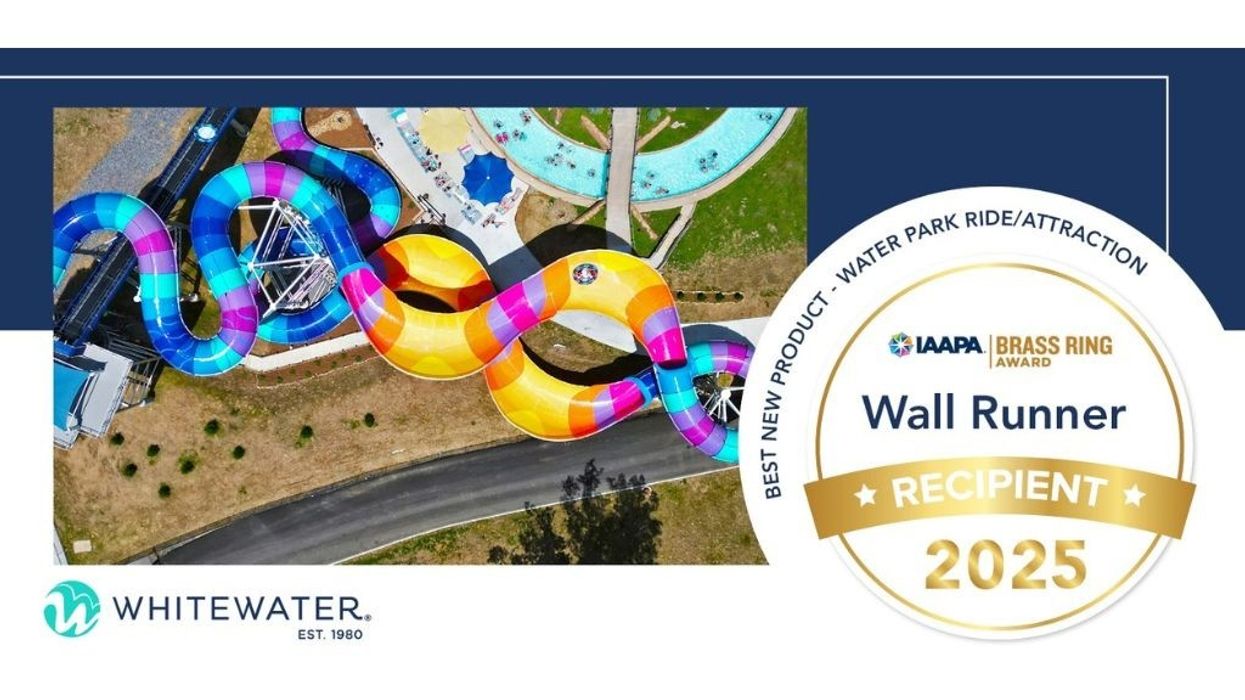
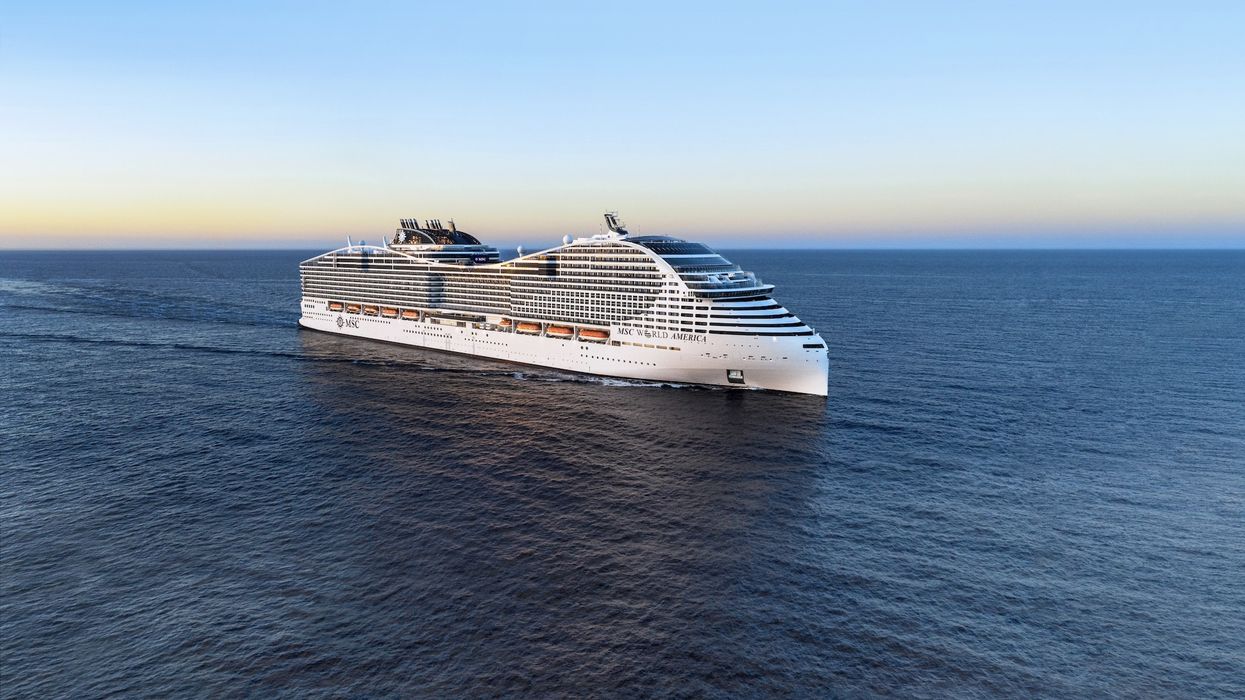
 Bernard Biger
Bernard Biger